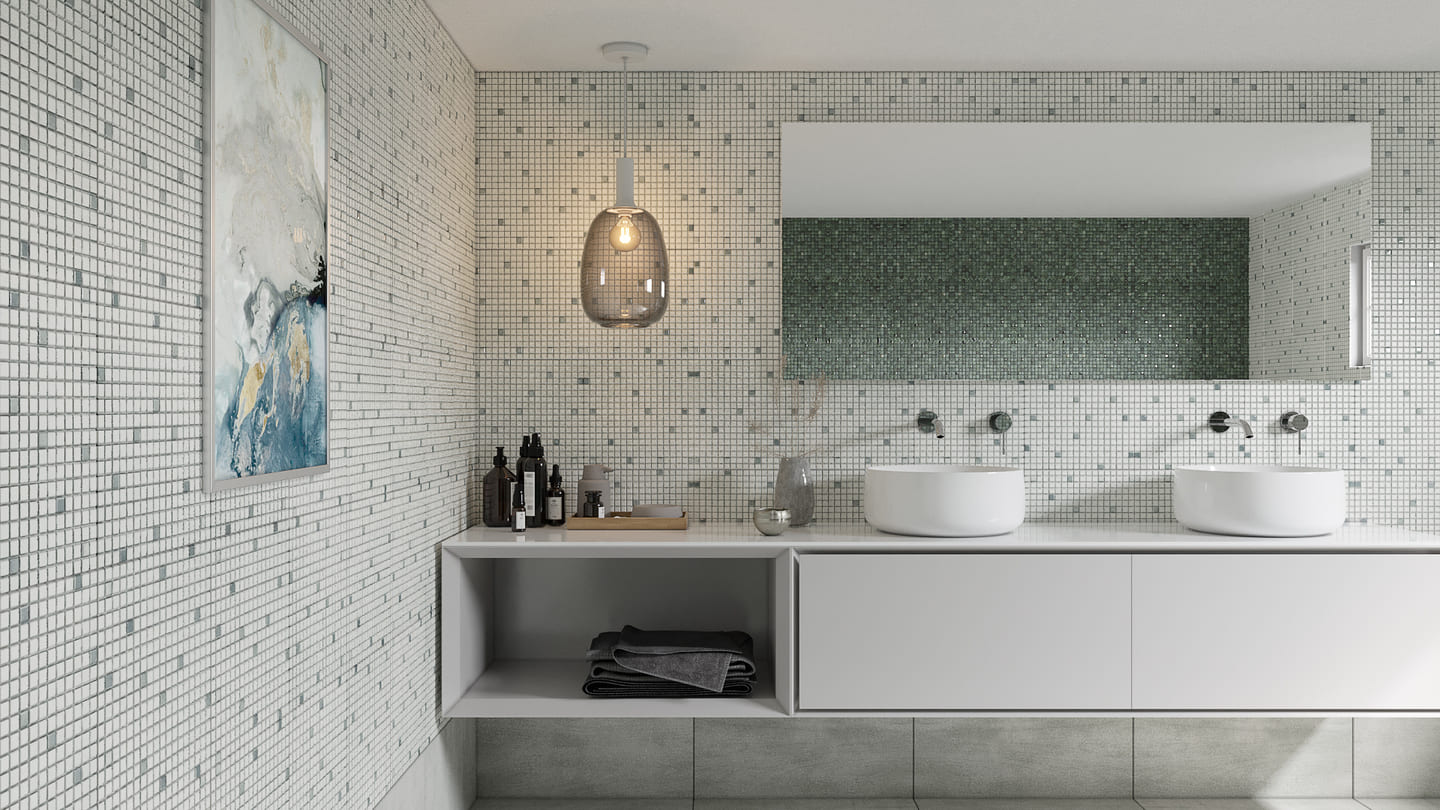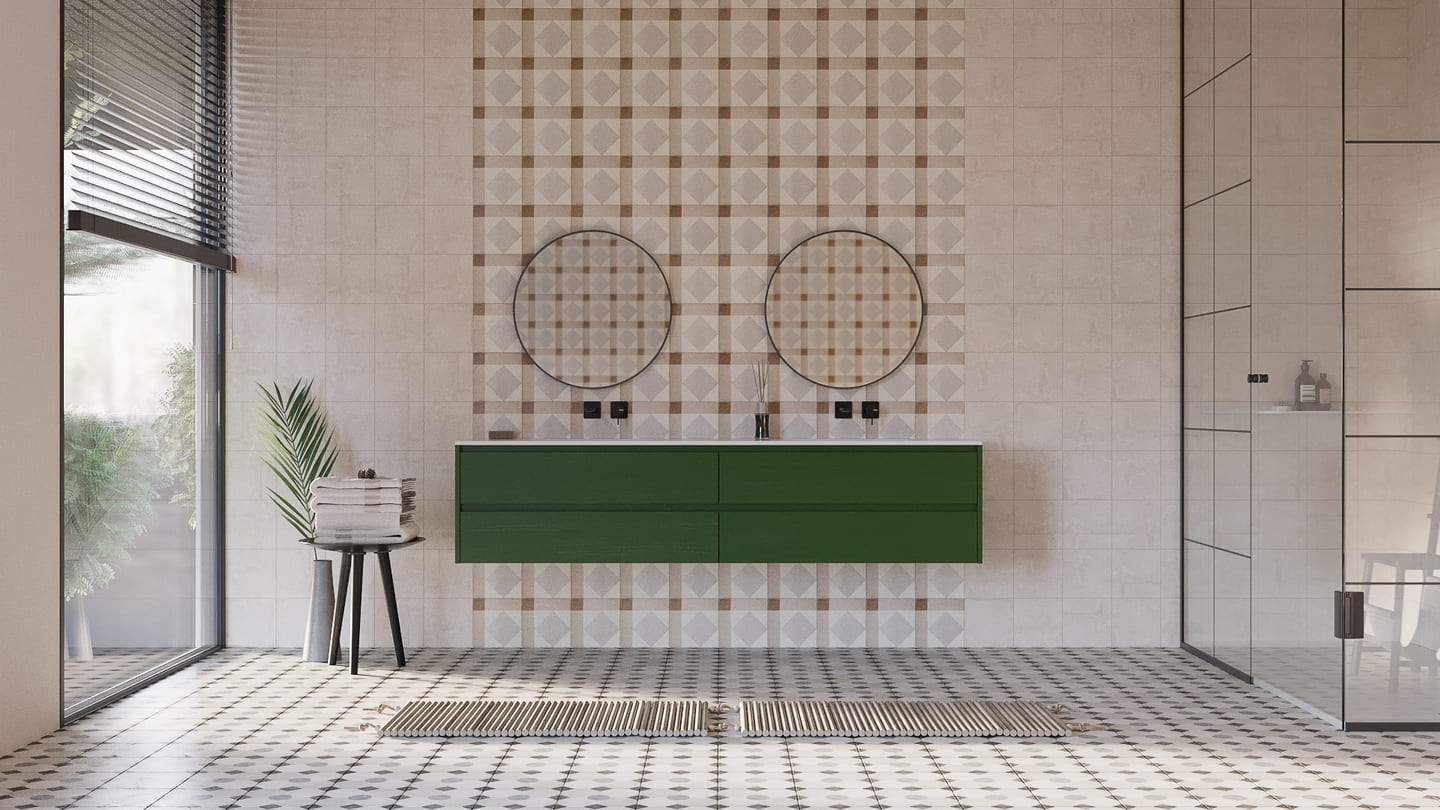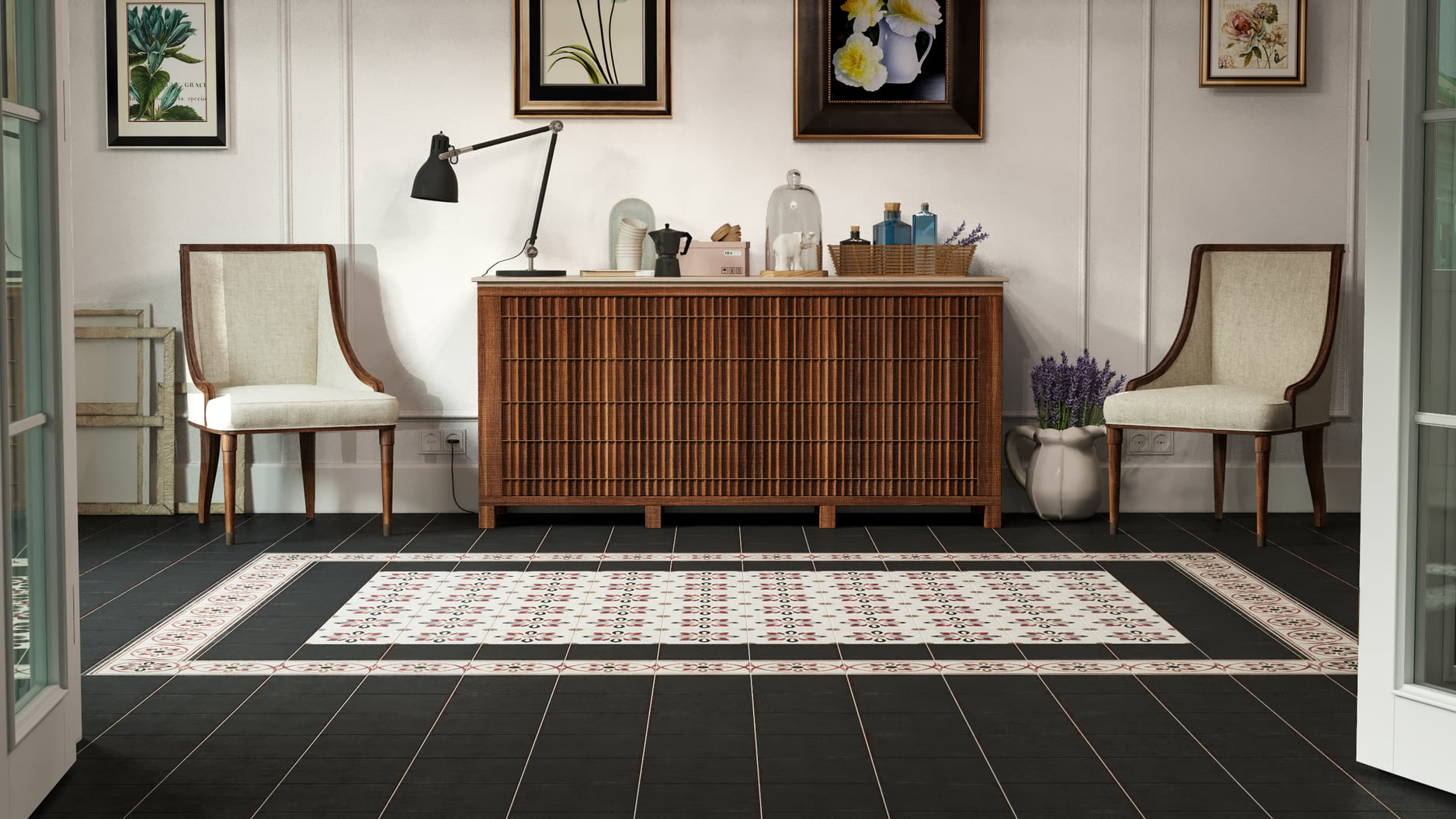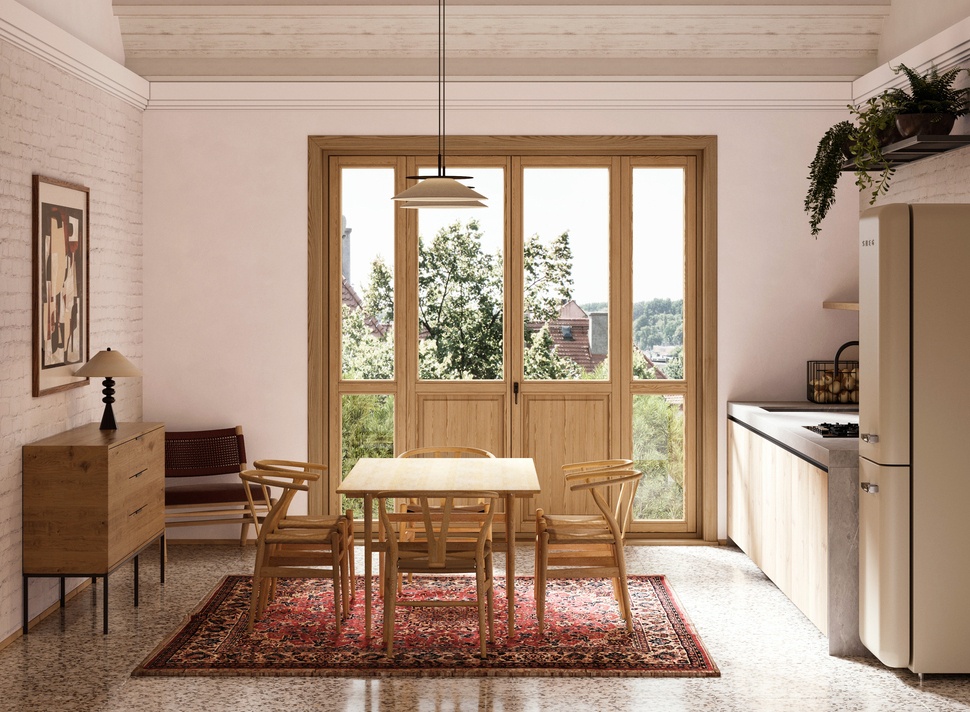The Best Practices and Tips For Rendering Home Design With Different Styles and Themes
The Intersection of Styles and Rendering: An Introduction
Home design is diverse and ever-evolving, mirroring many lifestyles, tastes, and aspirations. Just as painters need to master different strokes, those involved in architectural design must understand the nuances of various styles and themes to breathe life into their renderings. This comprehensive guide will discuss best practices and tips for rendering home designs in different types and themes. Each class brings challenges and rewards, from the minimalist zen to the elaborate baroque.

Image from Yousee Studio
Fundamentals of Rendering: What You Need to Know
Before diving into styles, let's brush up on the fundamentals of rendering. Rendering is creating a two-dimensional or three-dimensional image from a model using computer programs. Quality rendering platforms such as Autodesk’s 3ds Max and SketchUp offer potent tools for realistic visualizations. But remember, no matter how robust your software, understanding the principles of light, shadow, and material is crucial. For new graduates, consider courses from platforms like Khan Academy or Skillshare to get a foundational grasp of the subject.
Minimalism: Less is More
Let’s start with one of the most popular styles—Minimalism. The essence of minimalism lies in simplicity, which might seem easy to achieve but can be pretty challenging. A minimal design is never empty; it is full of intent. So, every piece of furniture, the color scheme, and even the open spaces serve a purpose.

Image from Yousee Studio
Top Tips for Minimalist Rendering:
- Color Palette: Stick to neutral or monochromatic palettes. Vibrant hues should be minimal and serve as focal points.
- Lighting: Natural light is the cornerstone of minimalist design. Large windows and practical lighting solutions should be incorporated to eliminate the need for excessive artificial light.
- Function Over Form: Every piece of furniture should serve a purpose. If you’re placing a chair in a room, consider why it’s there.
Scandinavian Style: The Cozy Neutral
Originating from the Nordic regions, the Scandinavian style is characterized by functionality, simplicity, and natural materials. Similar to minimalism but not identical, this style often incorporates soft hues and cozy textiles to create a warm, inviting space.
Essential Guidelines for Scandinavian Rendering:
- Natural Elements: Think woods, stones, and a neutral palette enriched by textures.
- Functional Decor: Everything serves a purpose. From bookshelves that act as partitions to dual-function coffee tables, functionality is critical.
- Ambiance: The lighting should exude warmth. Opt for soft lights, and consider adding a fireplace.
Industrial Chic: The Raw Elegance
This style focuses on exposed brick walls, concrete, and visible pipes and ducts as an ode to the industrial era. The result is a raw, unfinished look that still exudes sophistication.
Industrial Chic Rendering Tips:
- Materials: Exposed brick, steel, and wood are essential. To make these elements pop, you must master rendering materials to look as realistic as possible.
- Color Scheme: Stick to earthy tones and metallics.
- Lighting: Go for pendant or metal light fixtures to enhance the industrial feel.
Baroque and Rococo: The Drama of Ornamentation
A complete departure from minimalism and Scandinavian simplicity, Baroque and Rococo styles reveal intricacy, drama, and grandiosity.
Baroque and Rococo Rendering Best Practices:
- Detailing: Prepare for intricate moldings, elaborate window treatments, and heavy, opulent furniture.
- Colors: Think royal—deep blues, purples, and extensive use of gold.
- Lighting: Chandeliers are almost a must. The lighting should enhance the opulence.
Crafting Reality: Final Thoughts
Rendering home designs with different styles and themes is both a science and an art. It involves a deep understanding of both technical aspects and aesthetic nuances. Always stay updated with the latest industry trends, tools, and tutorials, many of which can be found on websites like ArchDaily or DesignBoom.
As we’ve explored, every style has its essentials—color, material, and lighting. Mastering how these elements interact in different thematic settings is crucial for aspiring or professional home designers. So, continue learning, experimenting, and rendering. Your next masterpiece could be just a few clicks away.
Traditional Styles: The Charm of Yesteryears
The beauty of traditional styles lies in their timelessness. These designs often feature intricate detailing, rich color schemes, and a sense of history. They borrow heavily from European and Colonial styles, presenting grandiose yet warm spaces.

Image from Yousee Studio
Traditional Style Rendering Tips:
- Color Palette: Opt for rich, deep hues like burgundy, navy, or forest green. Accent these with gold or bronze detailing.
- Furniture: Antiques or replica furniture with intricate carvings and plush fabrics fit well.
- Lighting: Chandeliers and wall sconces offer a vintage appeal. Make sure your rendering captures the warm glow these light fixtures produce.
Bohemian Style: The Artistic Flair
Characterized by vibrant colors, varied textures, and a mishmash of patterns, the Bohemian style is for those who want their homes full of life, culture, and exciting items gathered on their journeys.
Essentials of Bohemian Rendering:
- Mix and Match: There are no rules. A blend of fabrics, colors, and furniture styles is encouraged.
- Natural Elements: Plants, especially those that are exotic or have interesting shapes, can add character to a Bohemian interior.
- Lighting: Ambient, warm lighting works best here. Consider fairy lights, candles, and ornate lanterns.
Japanese Zen: The Minimalism of the East
Inspired by traditional Japanese interiors and the philosophies of Zen Buddhism, the Japanese Zen style is minimalist but unique. It focuses on open spaces, natural light, and functional furniture that either fold or are low-lying.
Japanese Zen Rendering Tips:
- Natural Elements: Materials like wood and stone dominate the space. These should be rendered in natural colors and textures.
- Simplicity: Furniture should be functional and minimal to create open spaces.
- Lighting: The use of natural light is essential. Shoji screens can help filter daylight to create a tranquil ambiance.
Farmhouse Style: Rustic and Homely
Distressed wooden furnishings, vintage accessories, and light, organic colors characterize farmhouse interiors. The goal is to create a cozy, welcoming space that feels lived-in.
Farmhouse Rendering Guidelines:
- Color Palette: Light and muted colors work best. Think soft creams, light blues, or muted greens.
- Material: Wood is the primary material for furniture, and it often has a distressed finish.
- Lighting: Opt for ambient lighting with a rustic finish, such as mason jar lights or a vintage chandelier.
Beach Style: Casual Elegance
This style evokes the breezy, relaxed feeling of beach life. The dominant colors are light shades of blue, sandy tans, and sunny yellows.
Beach Style Rendering Tips:
- Color Scheme: Think of the beach and mix blues, sandy beige, and whites.
- Materials: Natural materials like light wood, rattan, or wicker are crucial.
- Lighting: Natural light should flood the space as much as possible. For artificial lighting, rattan or wicker lampshades can provide a beachy feel.
Closing Remarks
The key to mastering home design rendering across different styles and themes lies in understanding each style's fundamentals and unique elements. It’s crucial to not only be technically proficient but also creatively adaptive. This way, you can faithfully translate a design concept into a realistic rendering that resonates with your audience. For further reading, platforms like Architizer offer insightful articles and case studies that can be instrumental in honing your skills.
With this guide, you are well-equipped to explore the fascinating realm of home design rendering. Each project is an opportunity to apply these best practices and discover more. So why wait? Your creative journey in mastering home design rendering across various styles is just a click away!
Contact us at YouSee Studio for captivating 3D renderings and immersive virtual experiences.
Karen Spacey is a content writer and the author of this article.


